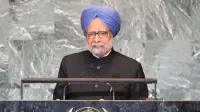Nvidia eyes Shanghai R&D hub amid rising pressure in China
16 May 2025
.webp)
In a strategic bid to retain its foothold in China’s rapidly evolving AI landscape, US chipmaker Nvidia is planning to establish a new research and development center in Shanghai. This move comes even as the company grapples with tighter US export controls that have significantly curtailed its sales in one of its key overseas markets.
Nvidia CEO Jensen Huang reportedly discussed the plan during a recent meeting with Shanghai Mayor Gong Zheng. The company has already secured office space in the city, aiming to support current staff and facilitate a potential expansion. Sources familiar with the matter say the proposed R&D center would focus on understanding local customer needs and navigating the complex technical limitations imposed by US regulations. However, the core design and manufacturing operations of Nvidia’s GPUs will remain outside China, due to legal and intellectual property concerns.
Despite the restrictions, Nvidia is keen to tap into China’s rich talent pool in AI engineering. Job listings in Shanghai indicate the company is actively hiring for roles related to deep learning hardware and ASIC design — an effort to sustain innovation across both local and global projects. These include chip verification, product optimization, and sector-specific research such as autonomous driving.
Strategic balancing act in a contested market
While the Shanghai government has shown tentative support, Nvidia continues to engage with US authorities to ensure compliance with existing export rules. The stakes are high: China accounted for roughly 14% of Nvidia’s $60 billion revenue last year, around $17 billion. Huang has publicly stated the market could grow to $50 billion in just a few years, provided US firms can maintain a presence.
Nvidia’s concern isn’t just about regulations — it’s about competition. Domestic tech giants like Huawei are pushing ahead with alternative AI chip ecosystems, aiming to replace US suppliers in sensitive sectors. “If we leave a market altogether, there’s no question somebody else would step in,” Huang warned at a recent event hosted by the Milken Institute. “Huawei, for example, is very formidable… they’ll step in.”
As the US tightens the screws on tech exports — most recently targeting Nvidia’s H20 chip — the company is pivoting by offering lower-tier alternatives like the L20, a less powerful chip stripped of high-bandwidth memory. But these offerings are proving to be a tough sell. Chinese clients, including heavyweights like ByteDance, Alibaba, and Tencent, are reportedly hesitant to adopt chips that lag in performance compared to local alternatives.
An executive from a leading Chinese tech firm summed up the dilemma: “We’re stuck between choosing underpowered Nvidia chips that integrate smoothly with Cuda, or switching to Chinese chips and dealing with the system migration headaches.”
As of now, Nvidia is weighing its options carefully. While a redesigned, compliant high-end chip could potentially re-open the Chinese market, no concrete plans have been finalized due to the shifting regulatory environment.
Summary
Nvidia’s planned R&D center in Shanghai underscores the company’s effort to maintain a competitive edge in China, even as US export restrictions squeeze sales. With domestic rivals gaining ground and legal uncertainties clouding chip development, Nvidia is navigating a high-stakes balancing act — one that could reshape its role in the global AI economy.
FAQs: Nvidia’s China Strategy and AI Chip Export Controls
1. Why is Nvidia setting up an R&D center in Shanghai?
Nvidia aims to strengthen its presence in China by setting up a research and development center in Shanghai. The goal is to better understand the needs of Chinese customers, adapt to U.S. export regulations, and leverage China’s highly skilled AI talent pool.
2. Will Nvidia manufacture chips in China?
No. While the Shanghai R&D center will focus on research, design verification, and localization, core chip design and manufacturing will remain outside China to protect intellectual property and comply with U.S. legal restrictions.
3. How are U.S. export controls affecting Nvidia in China?
U.S. export controls have restricted Nvidia from selling its most advanced AI chips, such as the A100 and H100, to Chinese firms. Even downgraded versions like the H20 have come under scrutiny, limiting Nvidia’s ability to compete in the Chinese market.
4. What alternatives is Nvidia offering to Chinese customers?
Nvidia is offering lower-end processors such as the L20, which have reduced performance and lack high-bandwidth memory. However, these chips are reportedly less attractive to major Chinese tech firms due to performance limitations.
5. How important is the Chinese market to Nvidia?
China contributed around 14% of Nvidia’s revenue in 2024, totaling roughly $17 billion. CEO Jensen Huang estimates that the Chinese AI market could grow to $50 billion, making it strategically critical despite current regulatory hurdles.
6. What challenges does Nvidia face from Chinese competitors?
Nvidia is under increasing pressure from domestic Chinese chipmakers like Huawei, which are developing alternative AI chip ecosystems. If Nvidia’s access to China weakens, local players could fill the gap and erode its market share.
7. Is Nvidia’s move supported by Chinese authorities?
Shanghai’s local government has shown preliminary support for Nvidia’s R&D plans, though the company must still navigate U.S. export laws and international political tensions.
8. What roles is Nvidia hiring for in Shanghai?
Nvidia is recruiting engineers in Shanghai to work on global R&D projects including deep learning hardware development, ASIC design, and system optimization — reflecting its commitment to long-term innovation in AI technologies.
9. Could Nvidia re-enter the high-end chip market in China?
While Nvidia is exploring ways to redesign compliant high-performance chips, legal uncertainties and ongoing U.S. restrictions have delayed any finalized plans for such a move.
10. What are the broader implications for the global chip industry?
Nvidia’s balancing act between regulatory compliance and market access highlights growing geopolitical tensions in the semiconductor sector. The outcome could reshape global AI leadership, supply chains, and tech alliances for years to come.






















